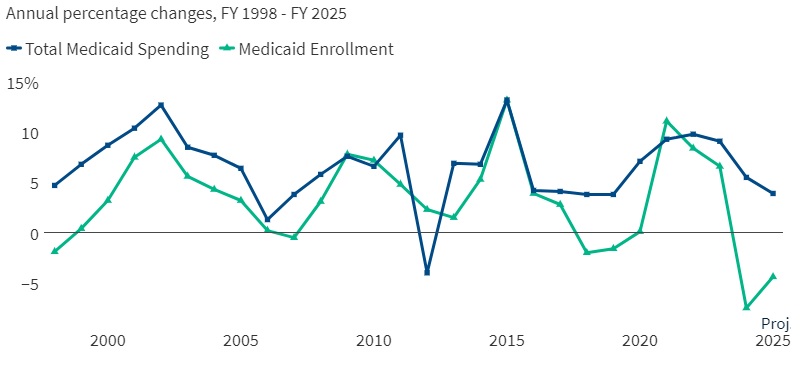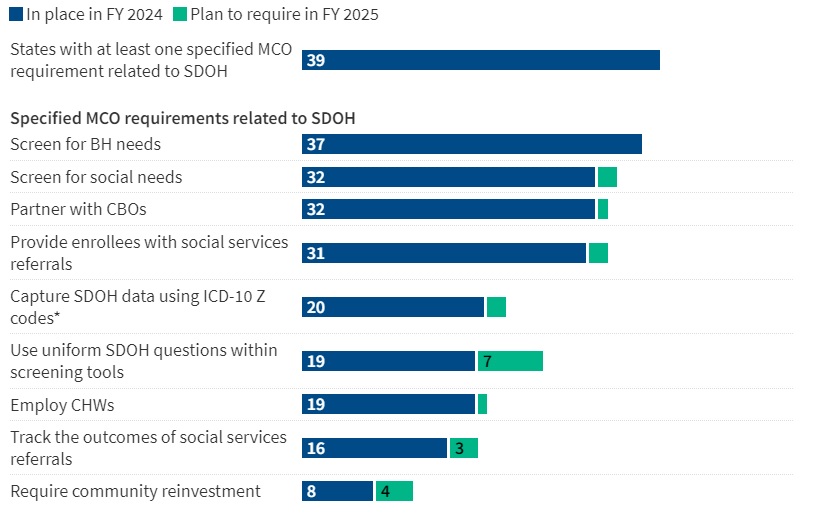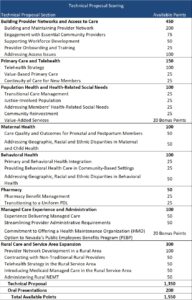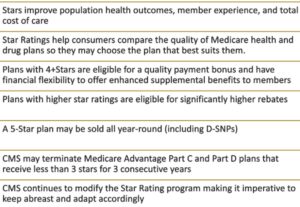This week’s In Focus section addresses post-election implications and initial considerations for understanding President-Elect Donald J. Trump’s possible federal healthcare policy agenda. Though healthcare was not the highest priority campaign issue, the president-elect and his team have signaled the policy agenda could include changes to the Affordable Care Act (ACA), Medicaid, and the nation’s public health programs.
Additionally, President Trump’s first term policy agenda and how these policies fared, provide critical insights into the policy direction for his second term, including policies on Medicare drug pricing, ACA marketplaces, and interoperability. Also vital to understanding and planning for a second term will be the appointees to key healthcare positions at the Department of Health and Human Services and in the White House.
Policy officials and specific policy agendas are still nascent, and Health Management Associates, Inc., federal and state experts are continuing to monitor these developments. The remainder of this article focuses on a few key considerations for the Marketplace, Medicaid, and Medicare healthcare insurance programs heading into 2025.
ACA Marketplace Issues to Watch
President-Elect Trump signaled he is uninterested in revisiting a legislative initiative to repeal and replace the ACA. However, one of the major defining issues facing the president-elect and the next Congress is the temporary policy providing enhanced tax credits that lower ACA premiums, which expires at the end of 2025. This and other tax policies are very likely to be on the table, particularly as budget reconciliation is an available tool in unified government.
Key considerations for healthcare stakeholders regarding the subsidy policy and federal funding for Marketplace outreach and education programs include:
- The Congressional Budget Office (CBO) estimates that extending the present enhanced subsidy policies would cost more than $300 billion over 10 years. The CBO also reports that ACA marketplace enrollment would drop from 22.8 million in 2025 to 18.9 million in 2026 if the subsidy policy is not renewed.
- The loss of subsidies would increase the number of uninsured individuals in the United States, but the size of the increase would depend on the state-specific landscape. For example, states that have not adopted the ACA’s Medicaid expansion for adults are expected to have a higher increase relative to states that have more expansive Medicaid eligibility. One potential approach is for lawmakers to modify the enhanced subsidy policy, rather than let it expire entirely.
- Marketplace plans should be prepared for a change in the acuity mix of enrollees while providers should expect a change in their payer mix, with more uninsured individuals in states that have not expanded Medicaid.
Federal and state policymakers may pursue a combination of alternatives to fill gaps in access to healthcare coverage and services. For example, the president-elect and incoming congressional leaders may focus on alternative coverage options and other state-driven reforms to Marketplace programs. Alternatives that could become part of the regulatory policy agenda include:
- Supporting association health plans (AHPs) and high-risk pools
- Reverting to a federal regulatory environment that supports short-term limited-duration healthcare insurance (STLDI) plans
- Approving Section 1332 waivers to allow state-designed programs
Medicaid Policy Outlook
During Mr. Trump’s first term, one of his administration’s signature Medicaid initiatives was approving Section 1115 demonstrations that allowed states to apply work requirements to certain populations, including adult expansion populations. The first Trump Administration also revised the demonstration parameters for Section 1115 Institutions for Mental Disease (IMD), allowed coverage lockout for beneficiary noncompliance with premium payments, and approved a pilot program to test interventions addressing health-related social needs (HRSNs).
Key considerations for healthcare stakeholders regarding Medicaid flexibilities and funding include:
- Officials in the first Trump Administration approved North Carolina’s Medicaid 1115 demonstration program to address HRSNs. President Biden’s Administration expanded these policies and approved demonstrations in more than 10 states, with additional state applications pending. Incoming officials may maintain the overall policy direction with regard to HRSNs. However, they could pivot to narrow the scope of future state HRSN proposals. Another approach could include directing states to use in lieu of services (ILOS) authority in managed care delivery systems to address HRSN.
- During President-Elect Trump’s first term, Centers for Medicare & Medicaid Services (CMS) officials prioritized work requirements and capped allotments for certain components of a state’s Medicaid program. Some states might consider revisiting these options, with modifications. If this policy direction is refreshed, federal and state officials would benefit from the foundational work conducted during the first term.
- New CMS officials could prioritize work on transparency in Medicaid financing and reimbursement to providers. Federal officials, regardless of political affiliation, historically have sought to improve their understanding of the flow of Medicaid funding. Incoming officials could prioritize this issue again, which would have a varied effect on health plans and providers.
Medicare Priorities:
Relative to Marketplace and Medicaid, first term Trump Medicare policies were advanced with less conflict. Notable policy initiatives included a focus on healthcare-related challenges in rural communities, improving transparency, and reducing provider burden —all of which were also cross-cutting issues that encompassed policy work beyond Medicare and could continue to be central to the next Medicare policy agenda.
Key considerations for healthcare stakeholders regarding Medicare policy are as follows:
- The president-elect’s first term approach to Medicare Advantage (MA) plans sought to maximize enrollment in MA and encourage innovation and value-based design. It’s reasonable to expect second term CMS officials to maintain an overall favorable approach to MA too. Incoming officials could narrow their scrutiny of MA plans to bipartisan concerns, for example MA plans’ prior authorization policies.
- While improving outcomes for dually eligibles beneficiaries generally is a bipartisan issue, state agencies, MA and Medicaid managed care plans, and other interested stakeholders should monitor the incoming Administration’s policy agenda for dually enrolled beneficiaries in Medicare and Medicaid. During the Biden Administration, CMS issued final rules for Medicare Advantage Dual Eligible Special Needs Plans (D-SNPs) to improve integration for the Medicare-Medicaid dually eligible population., Incoming Trump officials could revisit the approach, including the breadth of requirements and compliance timelines.
- During his first term, President Trump was highly engaged in elevating concerns about prescription drug prices and HHS and CMS announced models and policies to lower drug prices for patients. In his second term, however, the President could seek to rein in certain aspects of the Inflation Reduction Act (IRA), while revisiting some of his prior proposals.
What to Watch
The incoming Administration and its transition team are moving expeditiously to nominate new Cabinet Secretaries and to identify key staffers. The individuals appointed to departmental, agency, and advisory leadership positions will have significant leeway in shaping the federal and state healthcare policy landscapes – determining which existing policies to review and potentially revise, new policies to develop, and the approach to working with state and local officials and stakeholders. This includes the Secretary of Health and Human Services, CMS Administrator, Director of the Centers for Disease Control and Prevention, Food and Drug Administration Commissioner, and Director of the National Institutes of Health, all of which require Senate confirmation. Additionally, healthcare stakeholders should continue to monitor the leadership races for the House and Senate and the primary congressional committees with jurisdiction over healthcare programs. These leaders will be key to a second term Trump legislative policy agenda.
Connect with Us
This article focuses in on a subset of issues within Marketplace, Medicaid, and Medicare and in the overall healthcare sector. Our 2024 Political Checkpoint webinar features our experts discussing these and other insights on the election results. They provided an overview of what to expect from Congress and the Administration, focusing on key legislative priorities and executive actions.
Join us for our next two webinars in the series exploring the election results:










